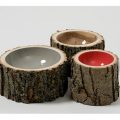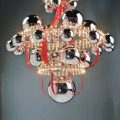The word "architect" (Greek."Chief Builder" has no feminine gender. This is an exclusively male profession and, as one famous Moscow architect said, "Godlike". At the same time, male chauvinism in our profession is as obvious as anywhere else. This is strange to me: after all, a woman by nature is a tireless builder. She connects, folds, adjusts everything that a man so easily destroys. But this is in life. In the profession, everything is the other way around. Where have the excellent students, beauties and clever girls gone - my classmates from Markha? Why is there not and never has been a single famous female name in Russian architecture? The expression "weakness is a woman's main weapon" is outdated. Much more effective means have appeared in the female arsenal: strength and self-confidence. However, there are not so many of them in the whole world. Women who have managed to occupy key positions in architecture are few and far between. And they are all unique. Architecture requires selfless service and takes up your whole life. There are no easy successes or accidental victories here. A great architect is always a great personality, forged by titanic work. I am amazed when she appears in female guise. Zaha Hadid, Carme Pinos, Odile Decq, Francine Houben. These "arch-babes" paved the way to fame without any allowances for the weaker sex, in fierce competition with men. I am trying to understand how they have enough time for everything: designing, coordinating, being aware of their employees' problems, teaching, winning competitions, dealing with clients, being irresistible, achieving their goals at a construction site and feeling happy. Happy? Happy! Four stories bear the names of our heroines.
Zaha Hadid, United Kingdom
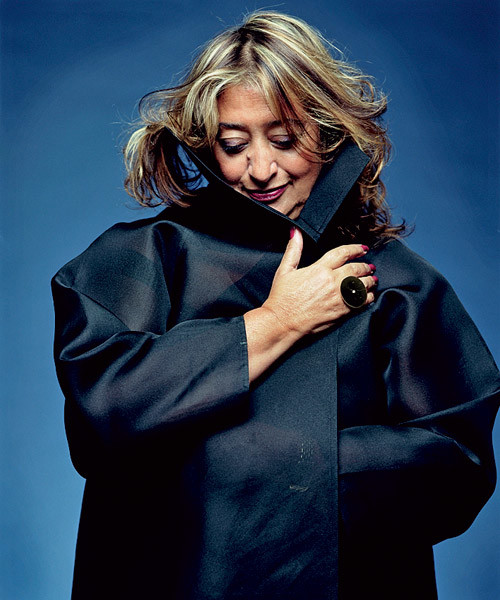 Women's ProfessionsPritzker Prize Laureate.One of the most sought-after architects in the world. Teaches at leading architecture schools. We are talking in St. Petersburg's Angleterre on the happiest day of her life. She won the Pritzker Prize. Her career has never been higher: the Zaha Hadid brand is known all over the world. Her architecture is immediately recognizable - it breaks and turns space inside out, replaces facades with multi-layered shells and seems to continue the earth's crust. Each object, be it a ski jump in Innsbruck or the not yet completed MAXXI (Museum of 21st Century Art) in Rome, immediately becomes a big event. For the first time we are talking about life. However, her life belongs 100% to her profession. Zaha decided to become an architect when she was a little girl and went to an international architecture exhibition. Her brother’s words played a role: “To be an architect means to build the world.” At the age of fifteen, Zaha left her native Baghdad and her parents to study in Europe. She graduated from one of the most prestigious schools, the London AA (Architectural Association). Her teacher was the famous Rem Koolhaas. After receiving her diploma, she became his assistant and partner at OMA. In 1987, she opened her own office in London. Her first success and reputation as a “paper architect” came from her famous graphics, where Hadid showed architecture in motion, based on the theories of the Soviet avant-garde artists of the 1920s. Her first construction, a fire station for Vitra, happened when she was already over forty. Since then, she has been incredibly in demand. Zaha would like to see her own house by the sea. It will have large, transformable spaces and lots of light. For now, these are just plans: "An architect can only afford the house of her dreams at the end of her career and life." "The only recipe for success is to work tirelessly, which is what I have been doing for many years now." Zaha Hadid knows from personal experience what gender discrimination in the profession is. "This is a serious problem, for which not only men are to blame, but also women," she believes, "they lack self-confidence and courage to push through their ideas. To achieve recognition, I always had to do everything ten times better." When asked about the sacrifices required by the profession, Zaha answers unexpectedly: "None! I don’t have a family, but I have never had to sacrifice anything." there was simply no time to think about personal life». P.S. At the ceremony in the Hermitage Theatre, Zaha Hadid admitted that in childhood she had two dreams: to become an architect and to fly into space. It seems that the woman of the East was able to realize both. Her career is quite comparable to a breakthrough into space.
Women's ProfessionsPritzker Prize Laureate.One of the most sought-after architects in the world. Teaches at leading architecture schools. We are talking in St. Petersburg's Angleterre on the happiest day of her life. She won the Pritzker Prize. Her career has never been higher: the Zaha Hadid brand is known all over the world. Her architecture is immediately recognizable - it breaks and turns space inside out, replaces facades with multi-layered shells and seems to continue the earth's crust. Each object, be it a ski jump in Innsbruck or the not yet completed MAXXI (Museum of 21st Century Art) in Rome, immediately becomes a big event. For the first time we are talking about life. However, her life belongs 100% to her profession. Zaha decided to become an architect when she was a little girl and went to an international architecture exhibition. Her brother’s words played a role: “To be an architect means to build the world.” At the age of fifteen, Zaha left her native Baghdad and her parents to study in Europe. She graduated from one of the most prestigious schools, the London AA (Architectural Association). Her teacher was the famous Rem Koolhaas. After receiving her diploma, she became his assistant and partner at OMA. In 1987, she opened her own office in London. Her first success and reputation as a “paper architect” came from her famous graphics, where Hadid showed architecture in motion, based on the theories of the Soviet avant-garde artists of the 1920s. Her first construction, a fire station for Vitra, happened when she was already over forty. Since then, she has been incredibly in demand. Zaha would like to see her own house by the sea. It will have large, transformable spaces and lots of light. For now, these are just plans: "An architect can only afford the house of her dreams at the end of her career and life." "The only recipe for success is to work tirelessly, which is what I have been doing for many years now." Zaha Hadid knows from personal experience what gender discrimination in the profession is. "This is a serious problem, for which not only men are to blame, but also women," she believes, "they lack self-confidence and courage to push through their ideas. To achieve recognition, I always had to do everything ten times better." When asked about the sacrifices required by the profession, Zaha answers unexpectedly: "None! I don’t have a family, but I have never had to sacrifice anything." there was simply no time to think about personal life». P.S. At the ceremony in the Hermitage Theatre, Zaha Hadid admitted that in childhood she had two dreams: to become an architect and to fly into space. It seems that the woman of the East was able to realize both. Her career is quite comparable to a breakthrough into space.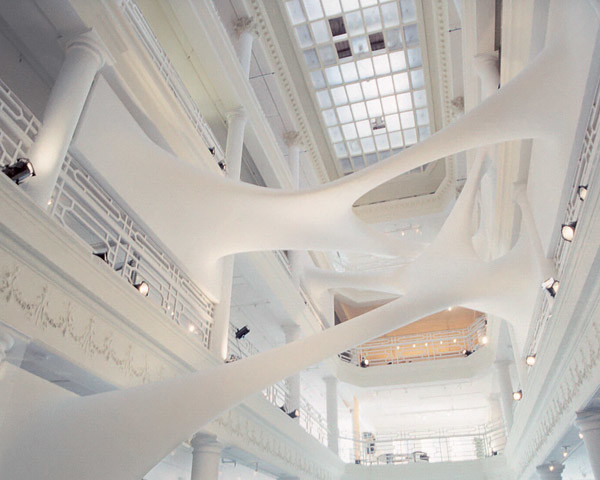 Architect woman
Architect woman
 Photo 1."Elastika", installation presented at the Design Biennale, a joint project by Zaha Hadid and Patrick Schumacher, Miami (USA, 2006). Photo 2. The futuristic design of the Z.Island kitchen (for DuPont), made of white Corian, created a sensation at the Milan Furniture Fair 2006. Photo 3. Science Center "Phaeno", Wolfsburg (Germany, 2000-2014).
Photo 1."Elastika", installation presented at the Design Biennale, a joint project by Zaha Hadid and Patrick Schumacher, Miami (USA, 2006). Photo 2. The futuristic design of the Z.Island kitchen (for DuPont), made of white Corian, created a sensation at the Milan Furniture Fair 2006. Photo 3. Science Center "Phaeno", Wolfsburg (Germany, 2000-2014).
Carme Pinos, Spain
 In Spain, he is a legendary figure.She teaches at Columbia University, Harvard, the Ecole Polytechnique de Lausanne and the Academy of Architecture in Mendrisio. Carme Pinos' life is divided into "before" and "after". The dividing line was drawn in 1991, when she founded her own bureau, Estudio Carme Pinos. This moment became the point that Carme put on her past. And it all began brilliantly: the talented and beautiful graduate of Etsab (Barcelona) marries the rising star of Spanish architecture Enrico Miralles. In 1983, they open an architectural studio, which very quickly gains momentum. However, the "double flight" does not work out. Critics and patrons, including Frank O. Gehry, predict a great future for Miralles and point-blank ignore Carme, ignoring the obvious fact of their joint creativity. Ultimately, Carme was left alone - without a husband and without a job. She had to make a choice: accept the unenviable role imposed by circumstances, admit the collapse of everything that made up the meaning of her life, or believe in her talent and set off on a new "solo flight". Carme chose the latter. She survived the untimely death of her ex-husband at the age of 45, already being a famous architect, who founded her own office and won the admiration of critics who had previously ignored her. Carme explains her path to success simply: "I have only one interest - to do my job well and to be able to continue it." "Architecture fills my whole life - I get everything from it and I give it everything." All her students are in love with her. They see before them a talented, beautiful and free woman, capable of building a new reality in architecture and her own life. «The happiest day? Every day in my studio,— says Carme. — I don’t have time for a personal life. But I don’t know, — the problem is in my profession or in myself.». Carme loves her home, where she was born and has lived all her life: «I love to feel like I’m part of my home. It’s a great privilege.»
In Spain, he is a legendary figure.She teaches at Columbia University, Harvard, the Ecole Polytechnique de Lausanne and the Academy of Architecture in Mendrisio. Carme Pinos' life is divided into "before" and "after". The dividing line was drawn in 1991, when she founded her own bureau, Estudio Carme Pinos. This moment became the point that Carme put on her past. And it all began brilliantly: the talented and beautiful graduate of Etsab (Barcelona) marries the rising star of Spanish architecture Enrico Miralles. In 1983, they open an architectural studio, which very quickly gains momentum. However, the "double flight" does not work out. Critics and patrons, including Frank O. Gehry, predict a great future for Miralles and point-blank ignore Carme, ignoring the obvious fact of their joint creativity. Ultimately, Carme was left alone - without a husband and without a job. She had to make a choice: accept the unenviable role imposed by circumstances, admit the collapse of everything that made up the meaning of her life, or believe in her talent and set off on a new "solo flight". Carme chose the latter. She survived the untimely death of her ex-husband at the age of 45, already being a famous architect, who founded her own office and won the admiration of critics who had previously ignored her. Carme explains her path to success simply: "I have only one interest - to do my job well and to be able to continue it." "Architecture fills my whole life - I get everything from it and I give it everything." All her students are in love with her. They see before them a talented, beautiful and free woman, capable of building a new reality in architecture and her own life. «The happiest day? Every day in my studio,— says Carme. — I don’t have time for a personal life. But I don’t know, — the problem is in my profession or in myself.». Carme loves her home, where she was born and has lived all her life: «I love to feel like I’m part of my home. It’s a great privilege.»


 Photo 1.School building, in collaboration with architect Enrico Miralles, Morella (Spain, 1986-1993). Photo 2. La Serra, high school building, Mollerussa (Spain, 1999-2001). Photo 3. Torre Cube, office building, Guadalajara (Mexico, 2004). Photo 4. Pedestrian bridge in Alicante (Spain, 1999), architect Carme Pinos.
Photo 1.School building, in collaboration with architect Enrico Miralles, Morella (Spain, 1986-1993). Photo 2. La Serra, high school building, Mollerussa (Spain, 1999-2001). Photo 3. Torre Cube, office building, Guadalajara (Mexico, 2004). Photo 4. Pedestrian bridge in Alicante (Spain, 1999), architect Carme Pinos.
Odile Deck, France
 One of Europe's leading architects,founder of her own architectural school, winner of numerous awards, including the Golden Lion at the 1996 Venice Biennale. She designs everything from airports to door handles. We talk a lot and in detail with Odile when she breaks out in Moscow at the invitation of our Center. Often about the role of women in the profession and in life. This is her topic. She believes that the female half of humanity is more perfect than the male half. "Being a woman in architecture" is a privilege and a difficulty at the same time, "says Odile. "A woman must fight harder, must be stronger than a man." And, like a true Frenchwoman, she adds: "You can do anything you want, because you are a woman." "Architecture is a deal with passion." Odile decided to become an architect thanks to the influence of a school teacher who gave private lessons in architecture. The main man in her life is the French architect Benoit Cornet. In 1985, they opened an office in Paris. There, in desperate arguments, their projects and the OD-BC brand were born. In addition to their love of architecture, this couple was united by their love for each other and crazy motorcycle riding. Then... a car accident. Odile survived and was left alone. The office still bears the names of two people, but the architecture created in it takes on the traits of Odile's personality. They did not fade after the misfortune, but became much stronger - powerful energy, warmth, a penchant for experimentation, a taste for life, a refusal to compromise. "Architecture is not male or female," says Decq, "it all depends on the personality." She builds a lot in different countries: the Western branch of the Banque Populaire in Rennes, the university complex in Nantes, the Museum of Modern Art in Rome. Her working day lasts from nine in the morning until ten in the evening. Odile gets her energy from traveling and teaching, and rests on the plane: “I just close my eyes and think about nothing.” Except maybe about my Parisian apartment. “It’s hard for an architect to make his own home. We are in an endless field of choice. After three months, you want to change everything.” That’s why Odile’s apartment used to have a black bedroom, now it’s white. And in general, there are a lot of unfinished work, but that’s the beauty of it. Photo 1. Staircase in the building of the Faculty of Economics of the UFR University in Nantes (1998). The complex designed by Decq also includes the library of the Faculty of Law and the Center for Human Studies. Photo 2. The A14 motorway overpass and control centre in the Parisian suburb of Nanterre (joint project by Decq and Cornet, 1996).
One of Europe's leading architects,founder of her own architectural school, winner of numerous awards, including the Golden Lion at the 1996 Venice Biennale. She designs everything from airports to door handles. We talk a lot and in detail with Odile when she breaks out in Moscow at the invitation of our Center. Often about the role of women in the profession and in life. This is her topic. She believes that the female half of humanity is more perfect than the male half. "Being a woman in architecture" is a privilege and a difficulty at the same time, "says Odile. "A woman must fight harder, must be stronger than a man." And, like a true Frenchwoman, she adds: "You can do anything you want, because you are a woman." "Architecture is a deal with passion." Odile decided to become an architect thanks to the influence of a school teacher who gave private lessons in architecture. The main man in her life is the French architect Benoit Cornet. In 1985, they opened an office in Paris. There, in desperate arguments, their projects and the OD-BC brand were born. In addition to their love of architecture, this couple was united by their love for each other and crazy motorcycle riding. Then... a car accident. Odile survived and was left alone. The office still bears the names of two people, but the architecture created in it takes on the traits of Odile's personality. They did not fade after the misfortune, but became much stronger - powerful energy, warmth, a penchant for experimentation, a taste for life, a refusal to compromise. "Architecture is not male or female," says Decq, "it all depends on the personality." She builds a lot in different countries: the Western branch of the Banque Populaire in Rennes, the university complex in Nantes, the Museum of Modern Art in Rome. Her working day lasts from nine in the morning until ten in the evening. Odile gets her energy from traveling and teaching, and rests on the plane: “I just close my eyes and think about nothing.” Except maybe about my Parisian apartment. “It’s hard for an architect to make his own home. We are in an endless field of choice. After three months, you want to change everything.” That’s why Odile’s apartment used to have a black bedroom, now it’s white. And in general, there are a lot of unfinished work, but that’s the beauty of it. Photo 1. Staircase in the building of the Faculty of Economics of the UFR University in Nantes (1998). The complex designed by Decq also includes the library of the Faculty of Law and the Center for Human Studies. Photo 2. The A14 motorway overpass and control centre in the Parisian suburb of Nanterre (joint project by Decq and Cornet, 1996).

Francine Huben, The Netherlands
 Head of the design firm Mecanoo.Builds all over the world. Her creative reach ranges from urban development strategies to interior design. She teaches in her native Delft and at European universities. I arrived to visit her in Delft late in the evening. We are talking in a floating restaurant opposite the 16th-century cathedral. Francine is feeding me: "After all, you came from the train." Huben has a long list of professional awards and is the director of the Rotterdam Architecture Biennale. Her buildings include the library of the Technical University of Delft, a sports center in Amsterdam, and a residential area in Utrecht. "Big Mom" of her office, Francine is aware of all the problems of her employees. Her car has a microphone built into it, through which she gives orders around the clock. My objects have three Ks: Composition, Contrast, Complexity. Huben did not achieve success right away. In 1986, she opened an office in Rotterdam with her first husband, who later became a famous architect, and quickly became famous. But her life filled with work and family joys did not last long. Her husband left, leaving her with business debts and three children, two of whom were just born at the time. Francine fell into depression for two years. Her sense of responsibility, perhaps her main character trait, brought her back to business. With incredible effort, she rebuilt and launched, this time independently, a design studio. Her personal life improved thanks to architecture. Having invited a specialist in the "scientific optimization" of office work, she soon married him. "For me, architecture is not just an intellectual game. It should affect all the senses." She is the only heroine of our story who has a family. Francine divides all her time between the office in Delft and her house near Rotterdam, where her three children and husband are waiting for her. When asked about priorities, she honestly answers that architecture is the most important thing in her life. "Children sometimes get offended. But I feel that I have talent. I know that it is inside me. Being an architect is my calling and the greatest commitment in my life." Francine is one of the few architects who has managed to build the house of her dreams. Her villa near Rotterdam with large, bright spaces is the home of a happy family. There is a chicken coop and rabbit houses for the children. Houben considers the happiest day of her life to be the celebration of her 50th birthday: her family and close friends spent the whole day in Montevideo, built according to her design.
Head of the design firm Mecanoo.Builds all over the world. Her creative reach ranges from urban development strategies to interior design. She teaches in her native Delft and at European universities. I arrived to visit her in Delft late in the evening. We are talking in a floating restaurant opposite the 16th-century cathedral. Francine is feeding me: "After all, you came from the train." Huben has a long list of professional awards and is the director of the Rotterdam Architecture Biennale. Her buildings include the library of the Technical University of Delft, a sports center in Amsterdam, and a residential area in Utrecht. "Big Mom" of her office, Francine is aware of all the problems of her employees. Her car has a microphone built into it, through which she gives orders around the clock. My objects have three Ks: Composition, Contrast, Complexity. Huben did not achieve success right away. In 1986, she opened an office in Rotterdam with her first husband, who later became a famous architect, and quickly became famous. But her life filled with work and family joys did not last long. Her husband left, leaving her with business debts and three children, two of whom were just born at the time. Francine fell into depression for two years. Her sense of responsibility, perhaps her main character trait, brought her back to business. With incredible effort, she rebuilt and launched, this time independently, a design studio. Her personal life improved thanks to architecture. Having invited a specialist in the "scientific optimization" of office work, she soon married him. "For me, architecture is not just an intellectual game. It should affect all the senses." She is the only heroine of our story who has a family. Francine divides all her time between the office in Delft and her house near Rotterdam, where her three children and husband are waiting for her. When asked about priorities, she honestly answers that architecture is the most important thing in her life. "Children sometimes get offended. But I feel that I have talent. I know that it is inside me. Being an architect is my calling and the greatest commitment in my life." Francine is one of the few architects who has managed to build the house of her dreams. Her villa near Rotterdam with large, bright spaces is the home of a happy family. There is a chicken coop and rabbit houses for the children. Houben considers the happiest day of her life to be the celebration of her 50th birthday: her family and close friends spent the whole day in Montevideo, built according to her design.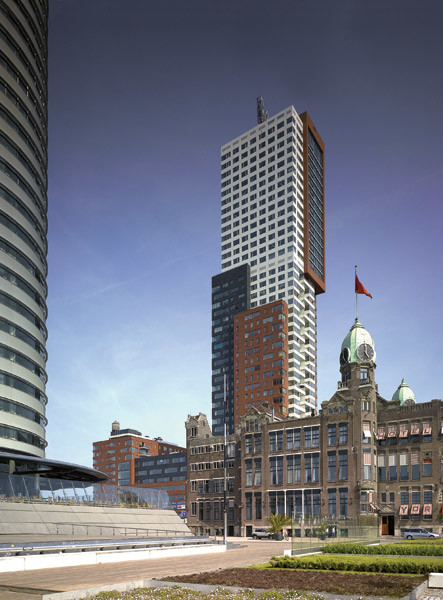


 Photo 1.The Montevideo residential building in Rotterdam (2006), the tallest building in the Netherlands (152.3 m). Photo 2. Library of the Technical University of Delft (1998). Photo 3. Francine House near Rotterdam. Photo 4. FiftyTwoDegrees, an international business center in Nijmegen (Netherlands, 2005-2014), designed by Francine Houben (Mecanoo).
Photo 1.The Montevideo residential building in Rotterdam (2006), the tallest building in the Netherlands (152.3 m). Photo 2. Library of the Technical University of Delft (1998). Photo 3. Francine House near Rotterdam. Photo 4. FiftyTwoDegrees, an international business center in Nijmegen (Netherlands, 2005-2014), designed by Francine Houben (Mecanoo).






